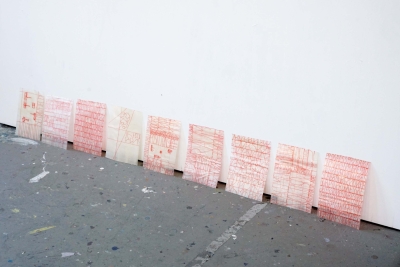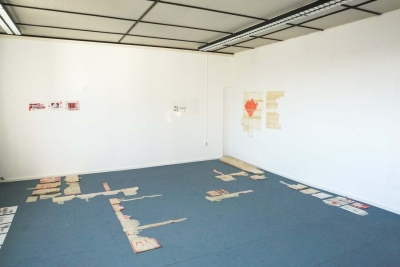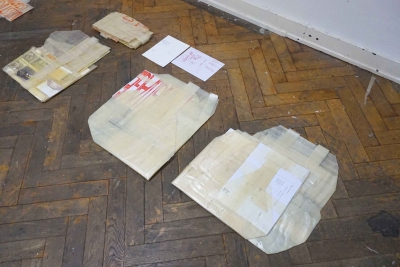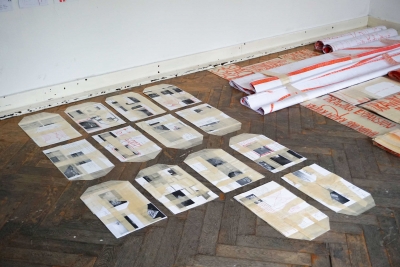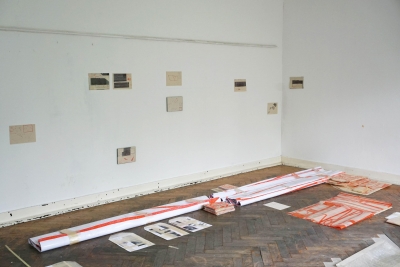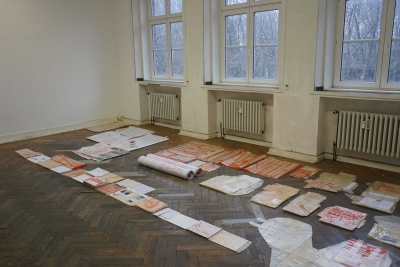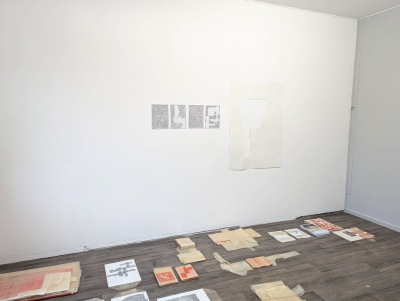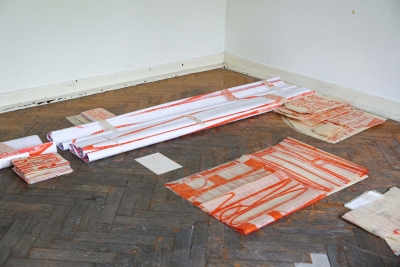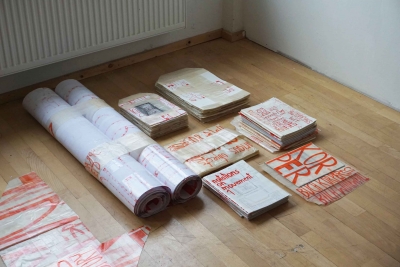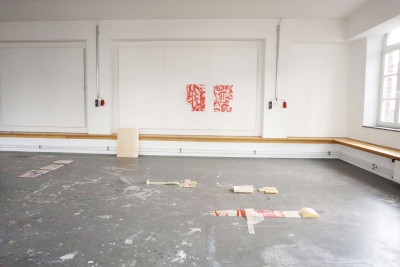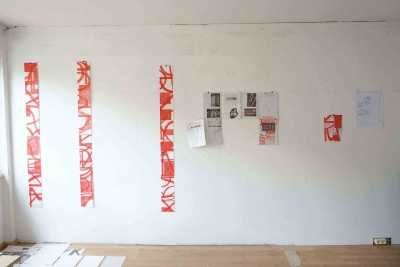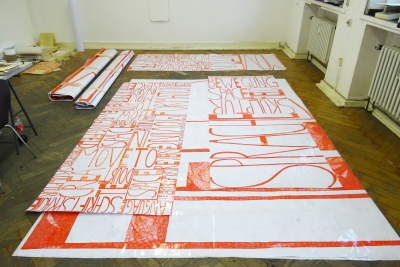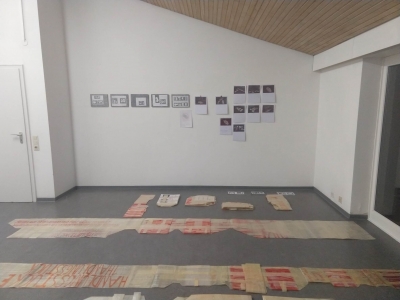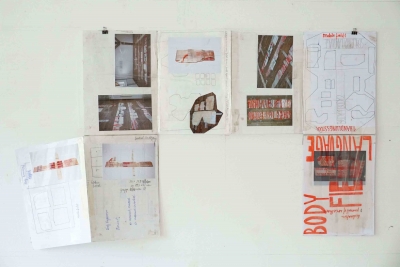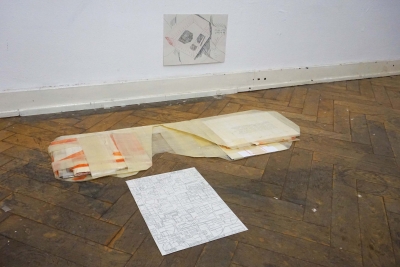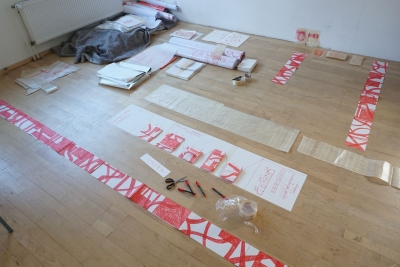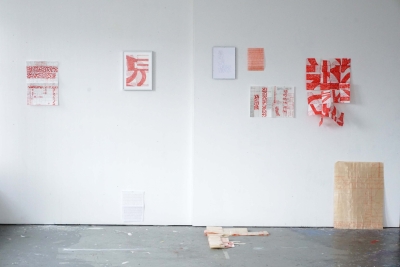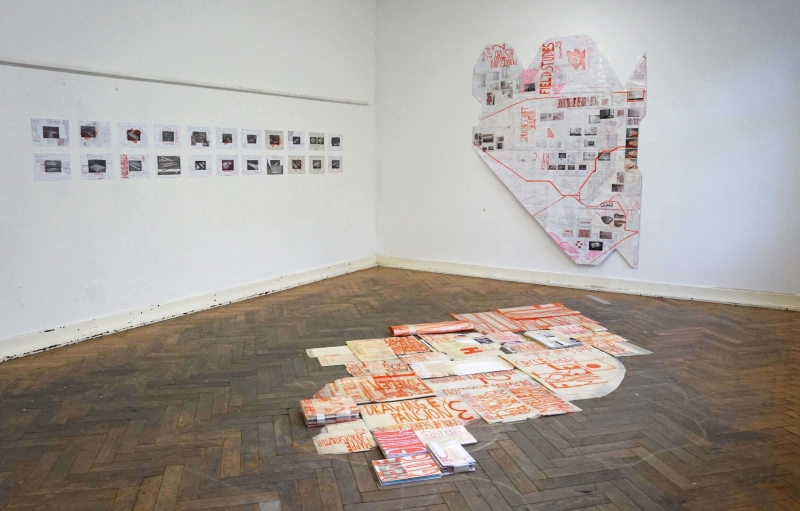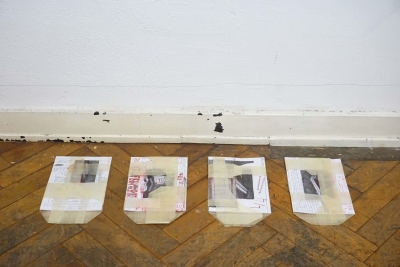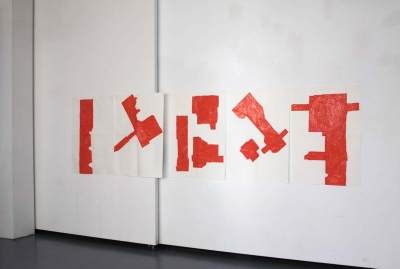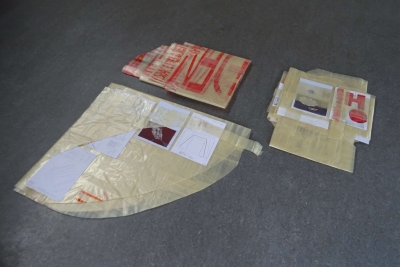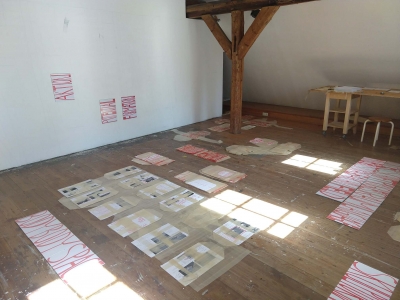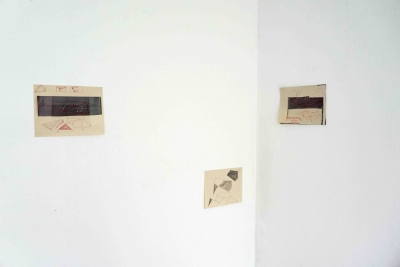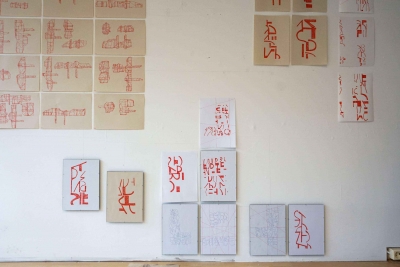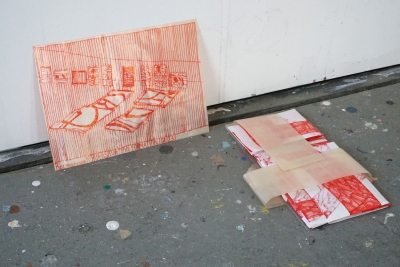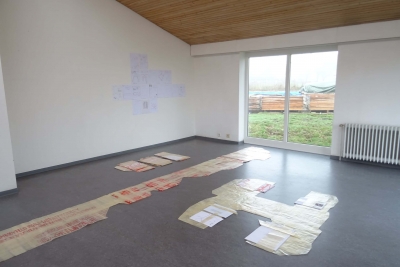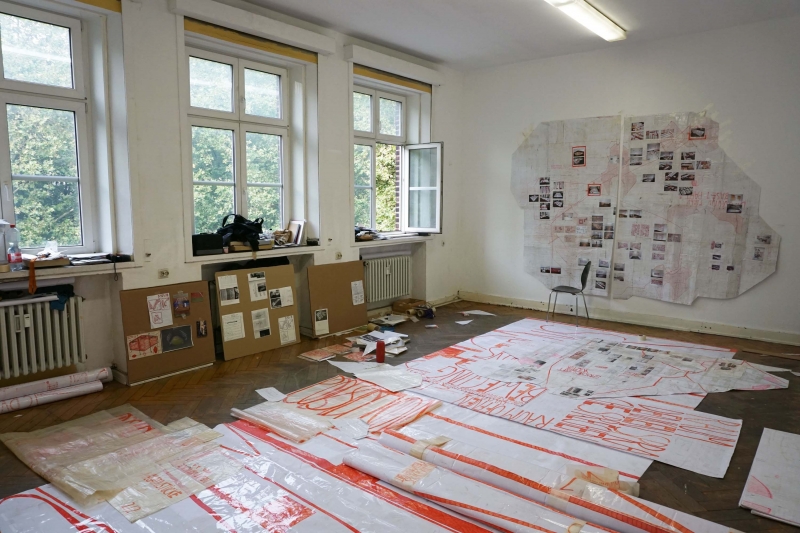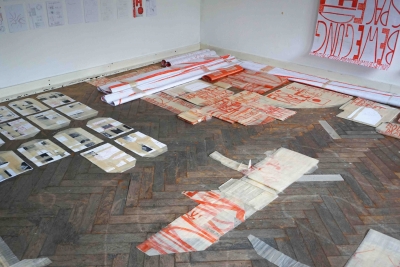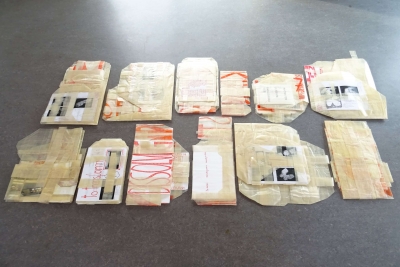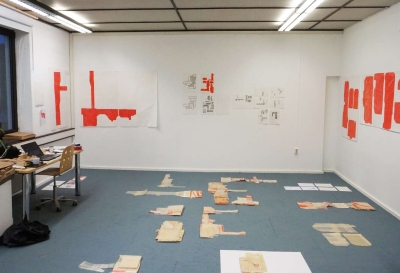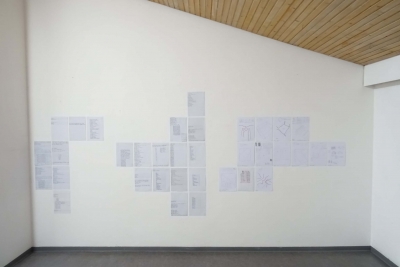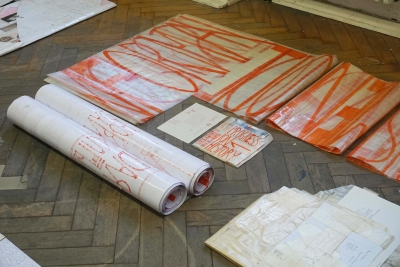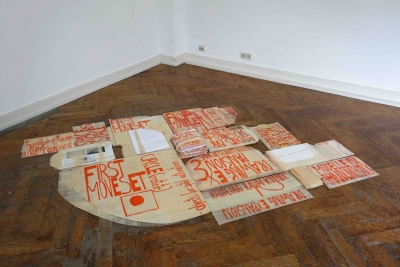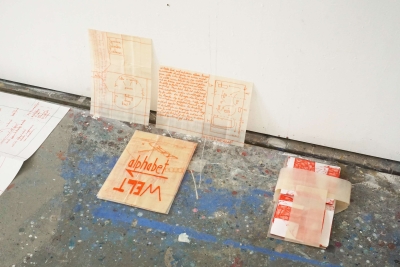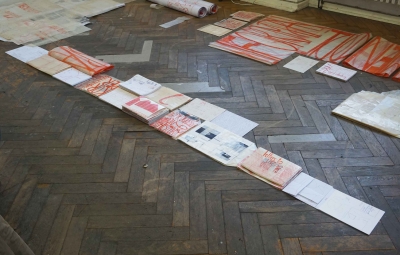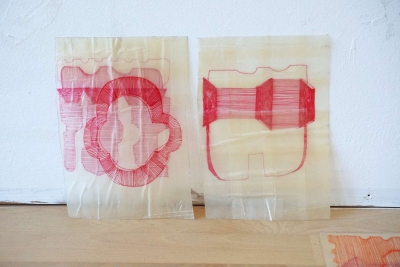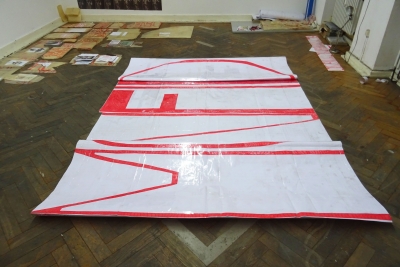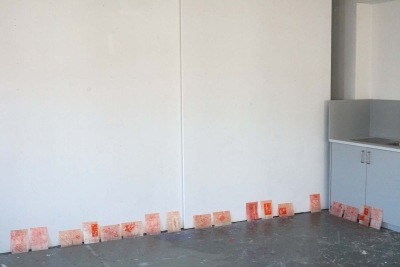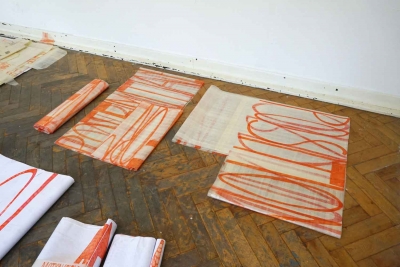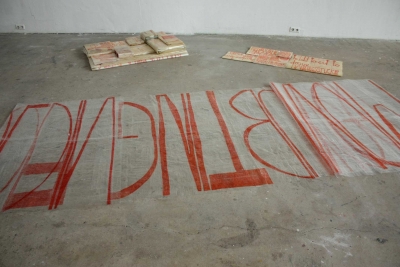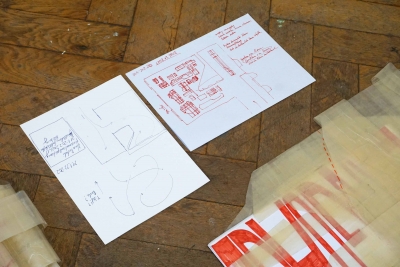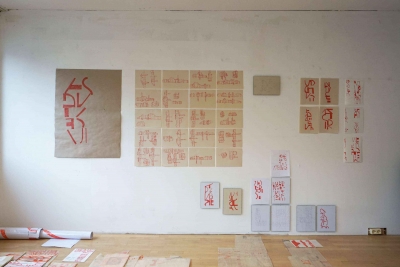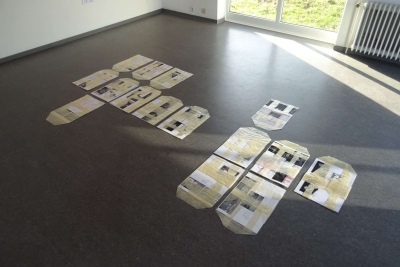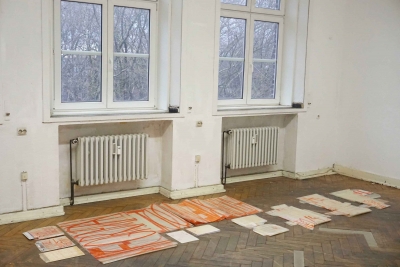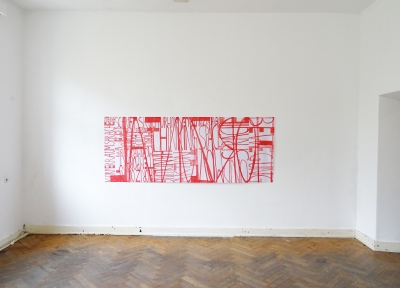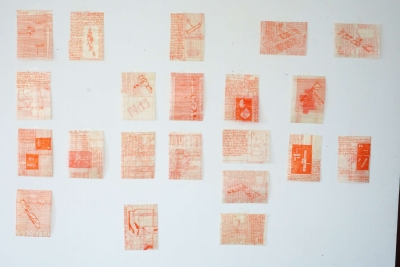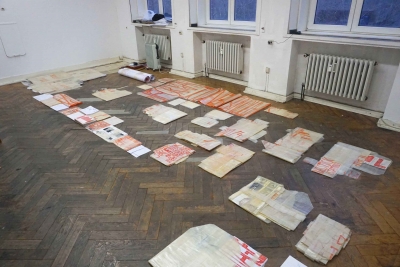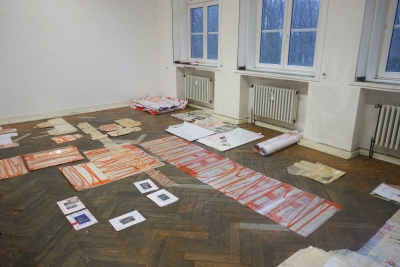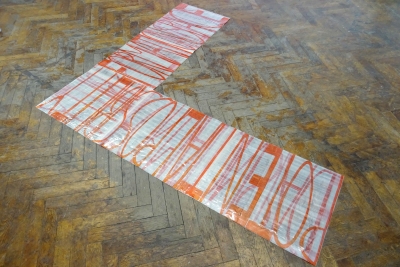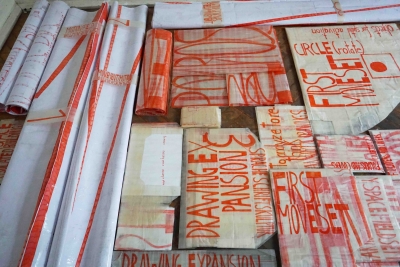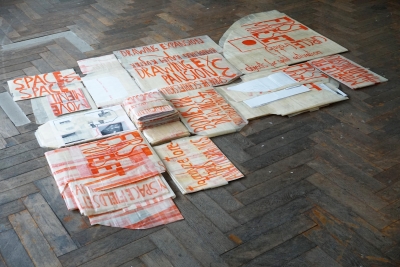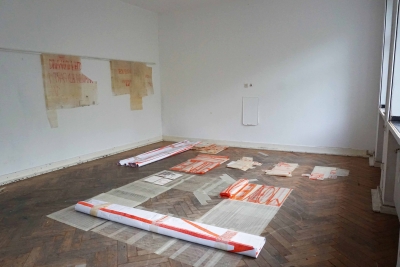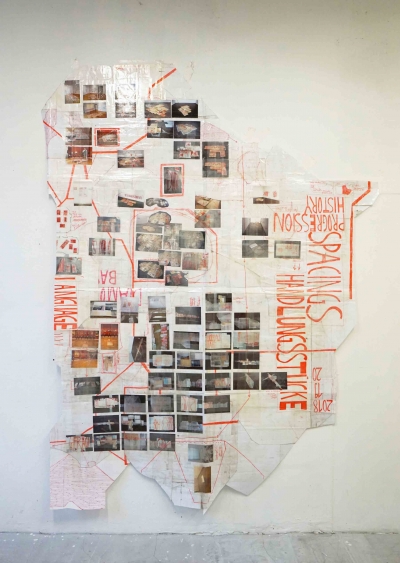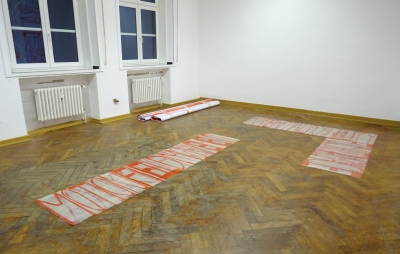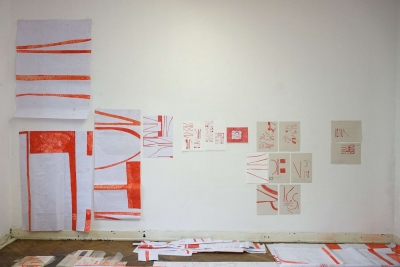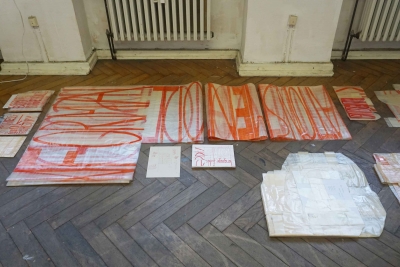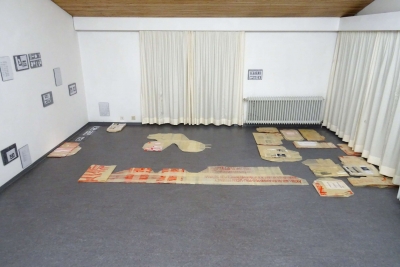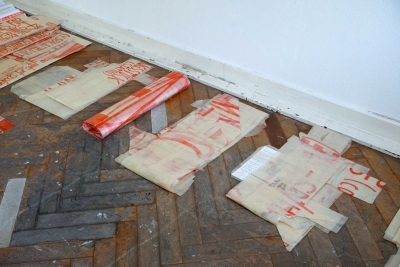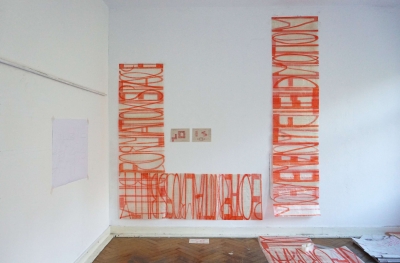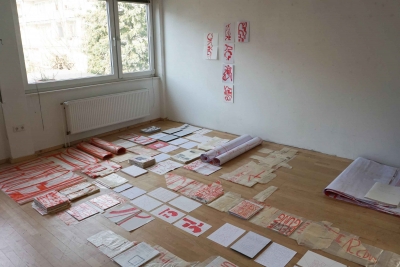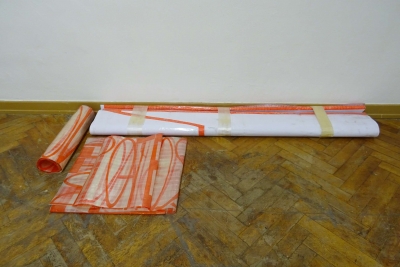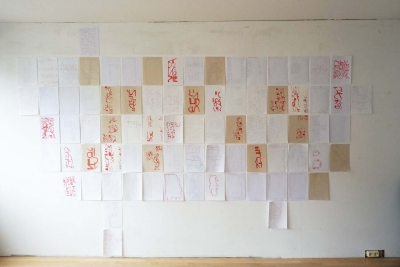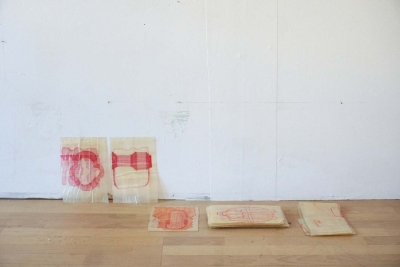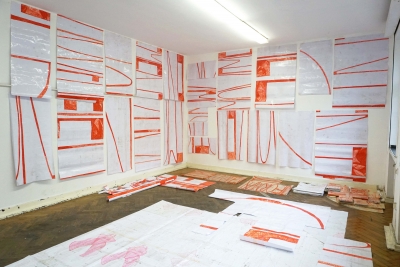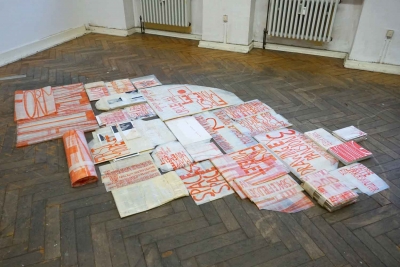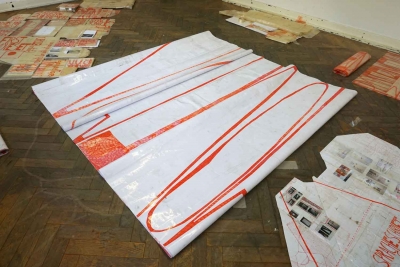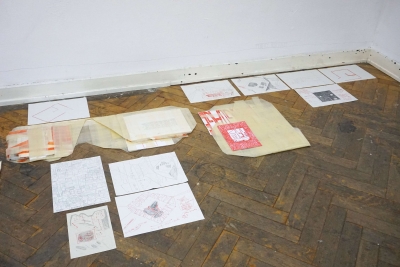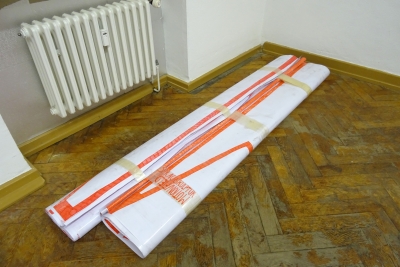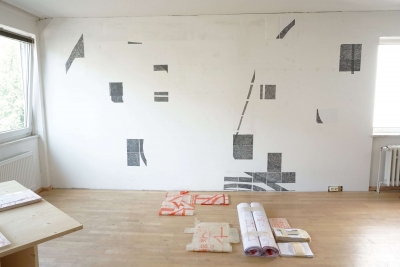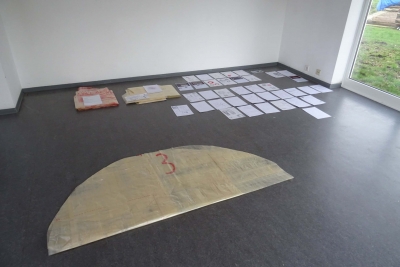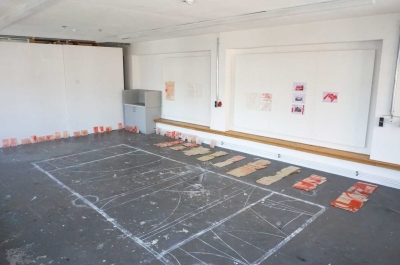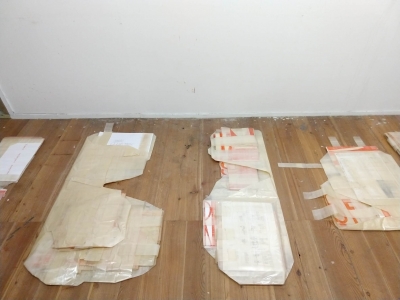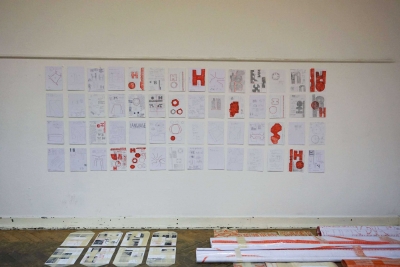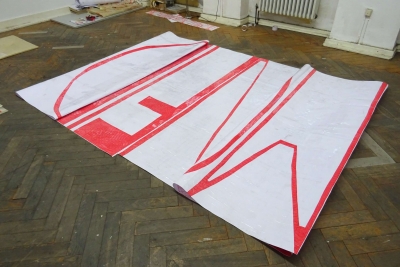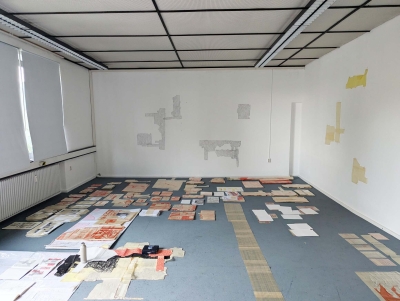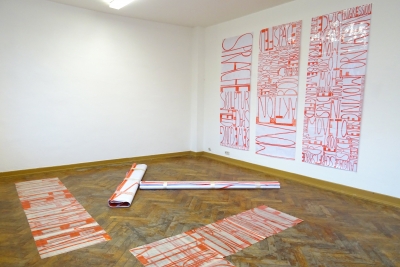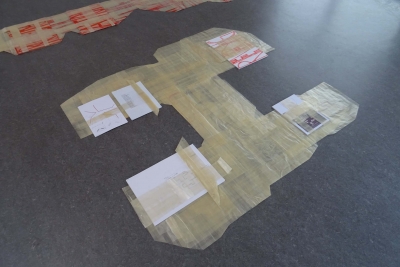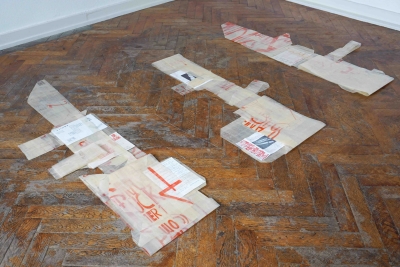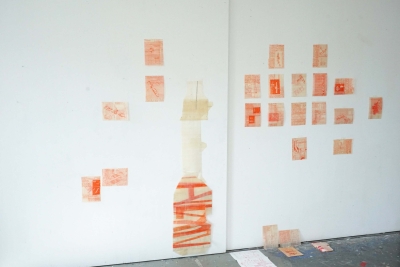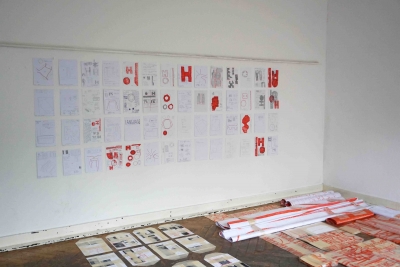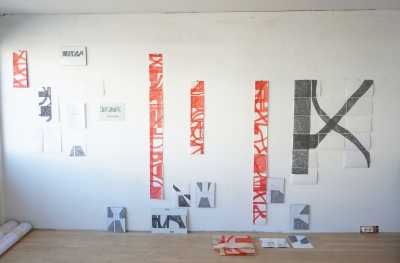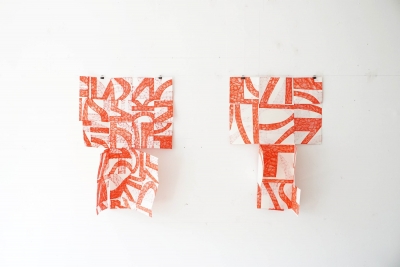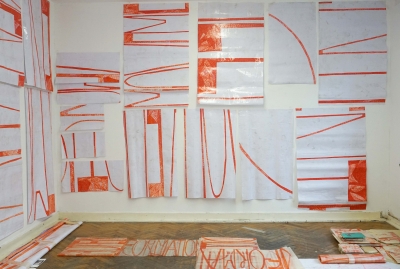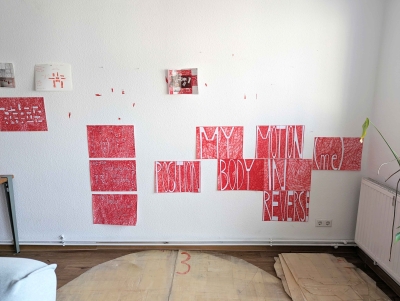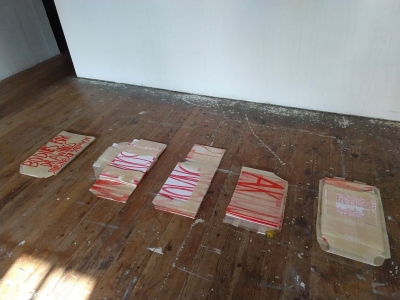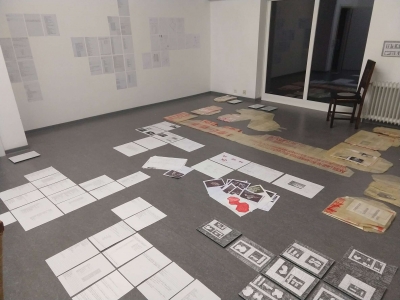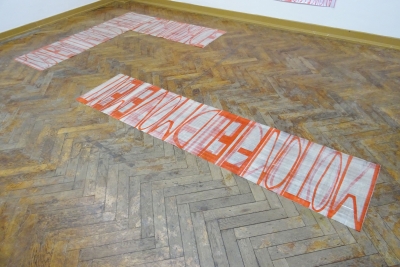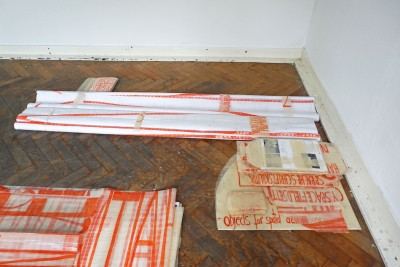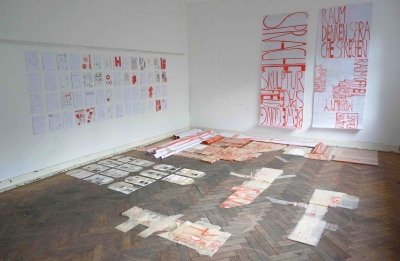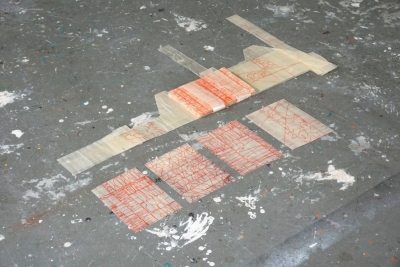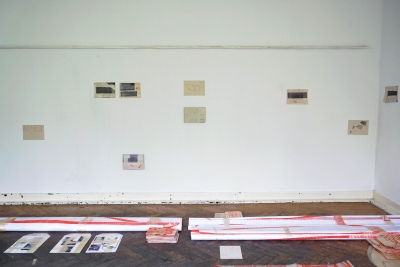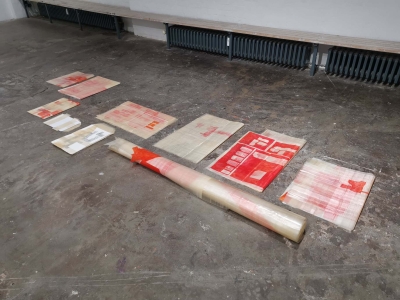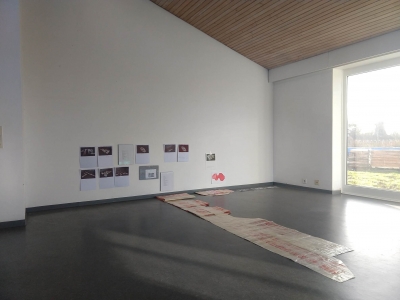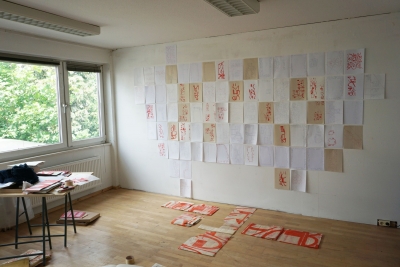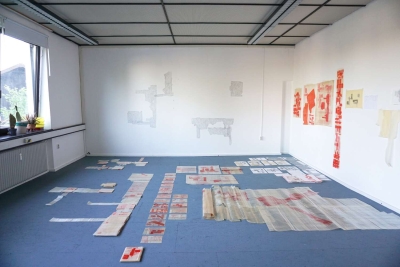- - notes: writing notation (2025) / thoughts on wall drawings/keeping score/b o d y s c o r e s
- - Kraftfelder, Andreas Bee (2018)
- - Zweifel in Permanentmarkern und Gedankenstrichen, Julika Bosch (2024)
- - In Formation bringen , Lisa Thiele (2023)
- - Spielfeld des Verstehens: Durchdeklinieren von Raum, Sprache und Bedeutung , Annekathrin Kohout (2024)
- - notes: my drawing process (2023)
- - notes: Reminder to myself (2022)
- - notes: what is (a) body? (2022)
- - SPACE BOOK, vocabulary of space, Annett Reckert (2020)
- - MOBILE BODIES, Aneta Palenga (2019)
- - LANGUAGE SPACE SCULPTURE, Petra Stegmann (2019)
MOBILE BODIES
Aneta Palenga
The title of the final exhibition of a 10-month residency-grant, that Nico
Pachali spent in the Lower Saxony town of Stuhr-Heiligenrode, stands like a
warning. As if his new set of work, titled BODY 1-4, is actually about to set
out on a journey. Afterall, we find in robinsonades, that even inanimate
objects can become a desperately needed counterpart. This may include your own
work as well. The graduate of the Braunschweig University of Art, spent an
intensive work period at the residency, after finishing his final year there.
Nico Pachali glue pasted copies of drawings to the walls of the gallery lobby, which analytically reflect on works shown in the two main rooms, titled SPACE BODY and SPACE LANGUAGE. The artist creates his own space of thought, to collect potential formations, as well as different visual manifestations of his work. In this way the audience is already made familiar with his thought process in a kind of transit-zone relating to: SPACE – BODY – LANGUAGE – MOVEMENT – ACTION.
SPACE BODY
In the larger one of the two rooms, 5 flat objects (BODY 1-4 or
HANDLUNGSSTÜCKE) are placed in a formation (BODY FORMATION) in the center of
the room. Cased in an organic-seeming synthetic envelope, interwoven with a
semitransparent, fine thread, Nico Pachali gave his works space – and with it a
body - for protection and storage. His objects thus become easy to transport
and versatile in their applicability. Even more so, the artist has turned them
into companion pieces to reflect on his former work and placed them in relation
to an order system: BODY 1 (Wall Formation), BODY 2 (SPACE VS. SPACE), BODY 3
(1. Handlungsstück), BODY 4 (Needing Language) as well as DRAWING EXPANSIONS
(1-3). Like the rings of a tree, the Bodies contain layers upon layers
of different development stages. Drawings and smaller objects – reminiscent of
blueprints or manuals – are complemented by self-reflexive text pieces and
collections of vocabulary, that relentlessly circle around the artists field of
reference: FORMATION, BODY, LANGUAGE, POTENTIAL, POSSIBILITY... rather subtle,
they are hardly visible. The multiple foldings of the BODIES, their wear, the
aging of their semi-transparent plastic envelopes, make it difficult to grasp
their entire contents.
For Nico Pachali drawing is thinking. A graphical, self-referential process
of reflexion. In drawings the artist investigates the meaning of the recurring
constants of his own work. His frame of reference: the specific space used, and
the experiences made in connection respectively. Pachali places his works
intuitively in the space at first, sketches the different possible
arrangements, reiterates this process with photographs of the room, which in
turn are labeled. Thereby he opens up the possibilities of potential transformations,
that not only communicate with their environment, but also with their creator,
by way of superimposition, overlapping, transparency, and legibility.
Format filling drawings of the BODY VOCABULARY, coloured in with red marker
in the artist’s unique handwriting, are installed on the wall above the raised
platform of the ”Müllerstube“ in the back part of the gallery: FORMATION,
STORAGE, MOVEMENT, PROGRESS – SCHRIFT (writing), HANDLUNG (action), SPRACHE
(language), KÖRPER (body), POTENZIAL (potential) – REJECTING, REVERSING,
ISOLATING, DENYING, IGNORING – DOUBTING, FOLDING, MOBILIZING, OVERLAYING.
Indeed the use of this terminology can be compared to their application in
strategic command lines in the NFL, the National Football League of the United States
of America. He takes the use of these command lines, among other things, from
the so called „playbooks“. The language used in this sport refers to the
essential vocabulary needed in the game. The few, precise commands function
both as commentary for the game moderator, as well as for the analysis of
possible moves and plays. It is this potential, the possibility to react to the
specific spatial situation, that Nico Pachali is appropriating as an artistic
strategy, through its language and aesthetic. A German-English intermixing of
language that calls to action, without giving an actual reference to
performativity.
We, as the audience, are in no way invited to unwrap the evidently folded
object. On the contrary, it seems necessary to observe the BODIES in their
physical ”stand-by“ state, in the given space. The horizontal sculptures give
the impression of papyrus artefacts from the future or of an insectoid
repository of knowledge. Each smaller object, as well as each drawing, exactly
fits into one of many custom-made slots, that are closed with flaps and loops.
Even the details of functional pieces of clothing are distinguishable. Each
BODY is evolved in a unique way. Neither metric exactitude, nor explicit
organic curves are important in the process of development. The sculptures
remain compatible exclusively to the system that Nico Pachali has developed. He
himself remains his only standard to which to compare to. They have to be
useful only for him. His determination for his works is shown by the cultivation
of a degree of crudeness, and the development and mastering of his own
expertise, craft and material.
Despite the aesthetic kinship, Pachalis pieces are different from Franz
Erhald Walters textile „1 Werksatz“ (1963 – 1969) or his „Handlungsbahnen“
(1997 – 2003), works, for which the install and deinstall is constitutive of
the piece itself. The amateurish and futuristic-seeming folding works of Nico
Pachali, much rather highlight the direct relation to their creator on the one
hand, and emphasize, on the other hand, that the potential of their inherent
„call to action“ is larger than the realization of the action itself. The
flexible and mobile properties of the BODIES, also express the artist's desire
for his own mobility.
The ideas for portability, as well as for a work process independent of
spatial and time constraints, emerged for the first time during a stay in
Mexico City (2015-16). The question was: How is it feasible to work as an
artist, independently from studio space, materials or even elaborate production
processes. By way of a reduction to little resources, that are almost always
present: paper and pencil, time and space. It is not for nothing that Pachali’s
thoughts mainly circle around the possibilities that these parameters offer.
SPACE LANGUAGE
How alive is one without language? This question became more and more
central during Nico Pachali’s time in Stuhr-Heiligenrode. The works in the
smaller gallery space focus on the necessity of language accordingly: NEEDING
LANGUAGE (FOR BODY), VOCABULARY DRAWINGS, as well as KLEINES SPRACHBUCH FÜR
BODEN.
Although The KLEINES SPRACHBUCH FÜR BODEN is placed central in the room,
half opened, it is theoretically possible to open and read it from both sides.
Labeled on both sides with red marker on transparent plastic, the 31 words,
that contain the language-essence of the BODIES, are superimposed on top of
each other. The artist formulates, in staccato-like triads, for example BODY
BODY SPACE or BODY FIELD LANGUAGE, the mental instructions of the VOCABULARY OF
SPACE, on two pencil drawings in the size of DIN A4 paper.
In a group of nine other pencil drawings, the artist connects language and
writing reminiscent of a manual with the experimental arrangement of his
objects. The single pieces of paper in plan view, show imaginary rooms or
spaces on a field, each filled and populated with the formations of the BODIES
together with language. Unused spaces on the other hand, are filled in with
pencil. This series developed during the residency to something autonomous,
which in its method, also forms the foundation for the artist book BODY
PLAYBOOK.
Coming back to the works of Nico Pachali. When observing them, like we did
in the beginning – as unknown, even animated objects – the question emerges:
whos body is actually meant when we speak of MOBILE BODY? His self-referential
interaction with these works, his analytical drawing and processual
questioning, becomes an end in itself. The visual and imaginative for him, is
inextricably linked with the thought and understanding of his own practice.
Thereby Nico Pachali rediscovers his works in this Terra incognita again and
again, and develops them further in this way. MOBILE BODIES: the hypothesis
suggests, that the potential of movement is more interesting, than the movement
itself.
